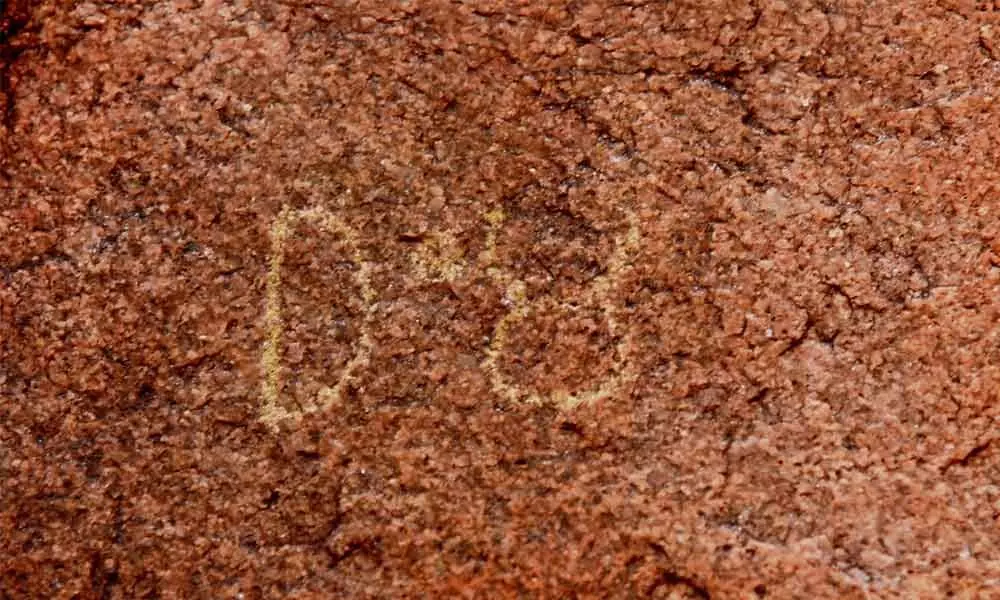Hyderabad: Brahmi inscription of Ashoka period found in Manjira valley

Brahmi inscription of Ashoka period found in Manjira valley
Researchers discovered a terracotta object containing Brāhmī inscription written in Prakrit language and in characters of the 3rd century BC. The inscription read “dēvānaṁ” prefixed with a symbol of ‘nandipada’
Hyderabad: Researchers discovered a terracotta object containing Brāhmī inscription written in Prakrit language and in characters of the 3rd century BC. The inscription read "dēvānaṁ" prefixed with a symbol of 'nandipada'. The word "dēvānaṁ" indicates the part of the title of the great emperor Aśōka of Mauryan dynasty.
History and Archaeology researcher MA Srinivasan and his team comprising of B Shankar Reddy, B Nagaraju and N Arun Kumar discovered this terracotta antiquity on the bank of Manjira river, a tributary of Godavari located at Kulcharam (deserted village) in Medak district. The present ancient mound is located in the island formed by the two streams of river Manjira.
The inscription on the pottery is studied and read as "dēvānaṁ" of Mauryan period by the Director, Epigraphy, Archaeological Survey of India. This discovery of Brāhmī script palaeographically assignable to Mauryan period on the terracotta is a rare and landmark epigraphical discovery in India in general and in Telangana State in particular.
Three Buddhist label inscriptions were also found in rock shelters just a kilometer away from the site where this antiquity is found. These inscriptions are in Prakrit language and Brahmi script of 1st BC-1st AD. They read as 'Henamo Buddeya', 'dhama', 'he jama' and are found on the rock boulders.
The researchers found them after cleaning these rocks. This rock shelter has the evidences of neolithic period too. Finding of the terracotta antiquity inscribed with Mauryan Brāhmī letters happened in the process of finding a supporting ancient habitation site for the Buddhist rock shelter.
The site spreading an area of about 100 acres and likely to yield a large number of archaeological materials besides evidences like fortification wall, terracotta objects such as different pot-shreds of red-slipped ware, black-polished ware and dull-red ware. "This discovery unveils a new chapter in the history of Telangana as this is the first time we could find such precious evidence in Manjira valley," said Srinivasan.
He added, "The research team urges the Department of Heritage and the Archaeological Survey of India to take up survey and excavations of the site to bring out more evidences to light. A thorough survey and search for the past three months in the rock beds and Manjira river bank could make this possible.
Throughout this research, the support and guidance of the Director of Epigraphy Archaeological Survey of India, historian Dr D Surya Kumar and Y Bhanu Murthy of Department of Heritage in each step is invaluable." The team members B Shankar Reddy, B Nagaraju and N Arun Kumar along with some students took part in this months-long exploration.

















